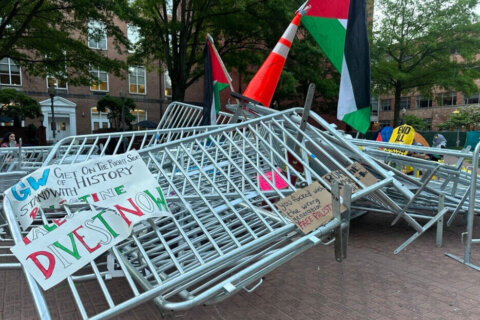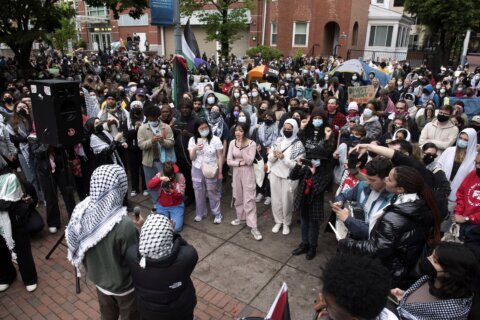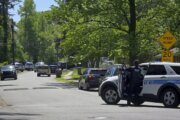Eclipse glasses in hand, millions of people around the D.C. area and across the U.S. paused to look up while the solar eclipse unfolded.
PHOTOS: Eclipse mania in DC — and around the US
Thousands of those people gathered on the National Mall, sitting in the grass and gazing up. Among the onlookers was Sarah Hewes, who brought her two kids along to watch.
“It’s just one of those really unique human experiences that brings everyone together,” Hewes said. “It’s nice. It’s a good reminder of what makes our spot in the universe beautiful and wonderful.”
While those in the D.C. region weren’t in the path of totality, area residents could spot a partial solar eclipse. A few passing clouds and warm temperatures made for an ideal forecast for viewing.
The new moon began crossing the face of the sun at 2:04 p.m. The sun was obscured 89% at maximum eclipse at 3:20 p.m. And by 4:32 p.m., the eclipse had ended.
Some of those who snagged a spot on the National Mall were in from out of town. One traveler from Philadelphia, Pennsylvania, said he came to D.C. for the cherry blossoms and to check out the monuments, but stuck around for the eclipse.
“We learned yesterday that they were having an actual eclipse festival. We decided to tag along,” he told WTOP. “It seemed like a good place to put out a blanket and relax.”
Earlier on Monday, thousands of people lined up on the National Mall to get last-minute safety glasses for viewing the eclipse as part of a festival hosted by the Smithsonian’s National Air and Space Museum. A spokesperson told WTOP’s Nick Iannelli that event organizers passed out more than 2,500 pairs.
What did kids think of the solar eclipse?
Some local schools created a learning opportunity out of Monday’s eclipse. Kids at Colvin Run Elementary School in Fairfax County, Virginia, sat in the grass, some in lawn chairs, and looked awe-struck at the solar eclipse.
Some students told WTOP the sight of the shielded sun reminded them of a cookie with a bite taken out of it.
Outside of the free glasses, the museum offered telescopes and supplies for making a pinhole projector to safely watch the eclipse and other educational materials.
“We’re here to just educate folks who have come down to the mall about how incredible the eclipse is, how it changes our earth and our climate,” said Shellie Pick, who’s with the Smithsonian Science Education Center. “Just spreading science today!”
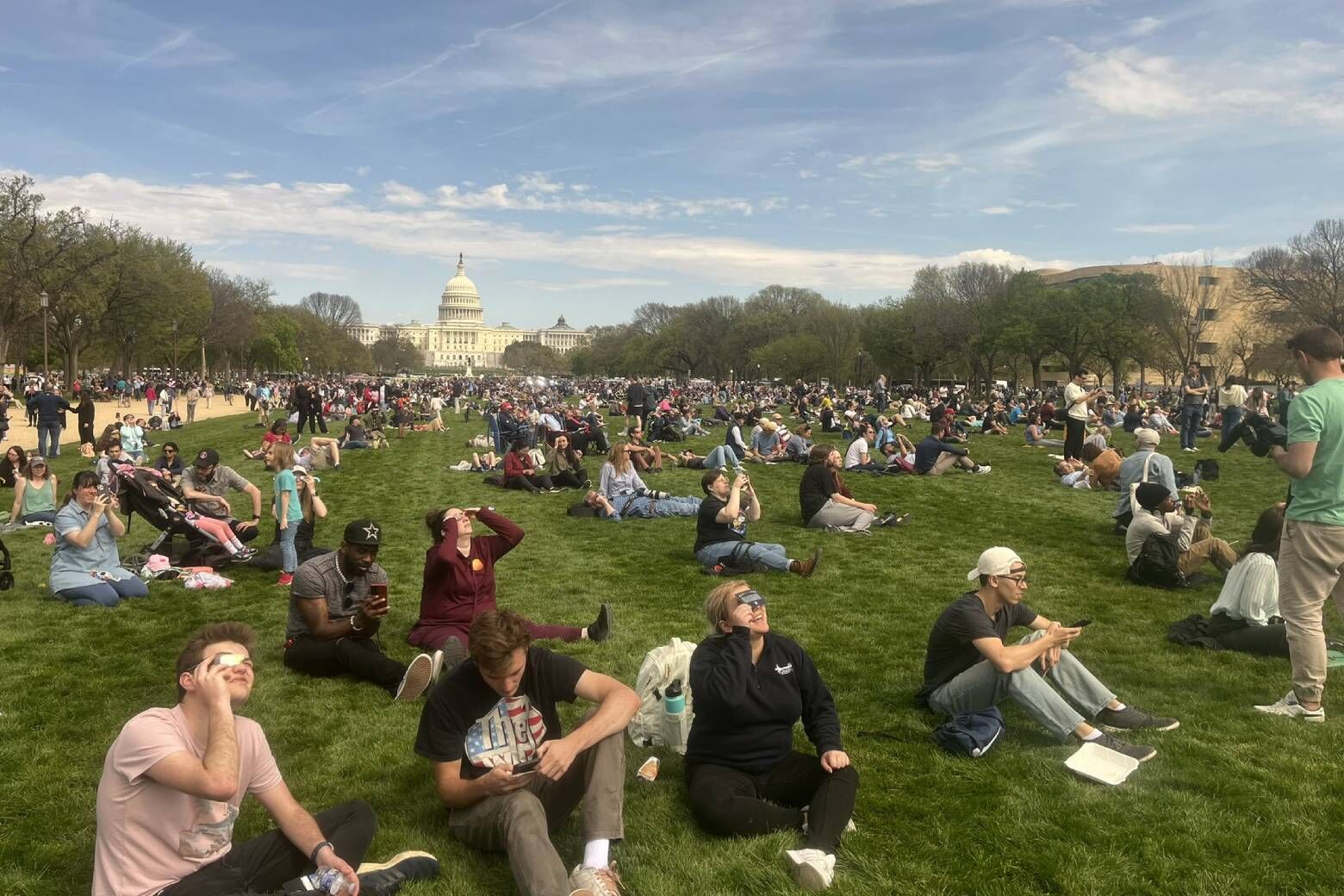
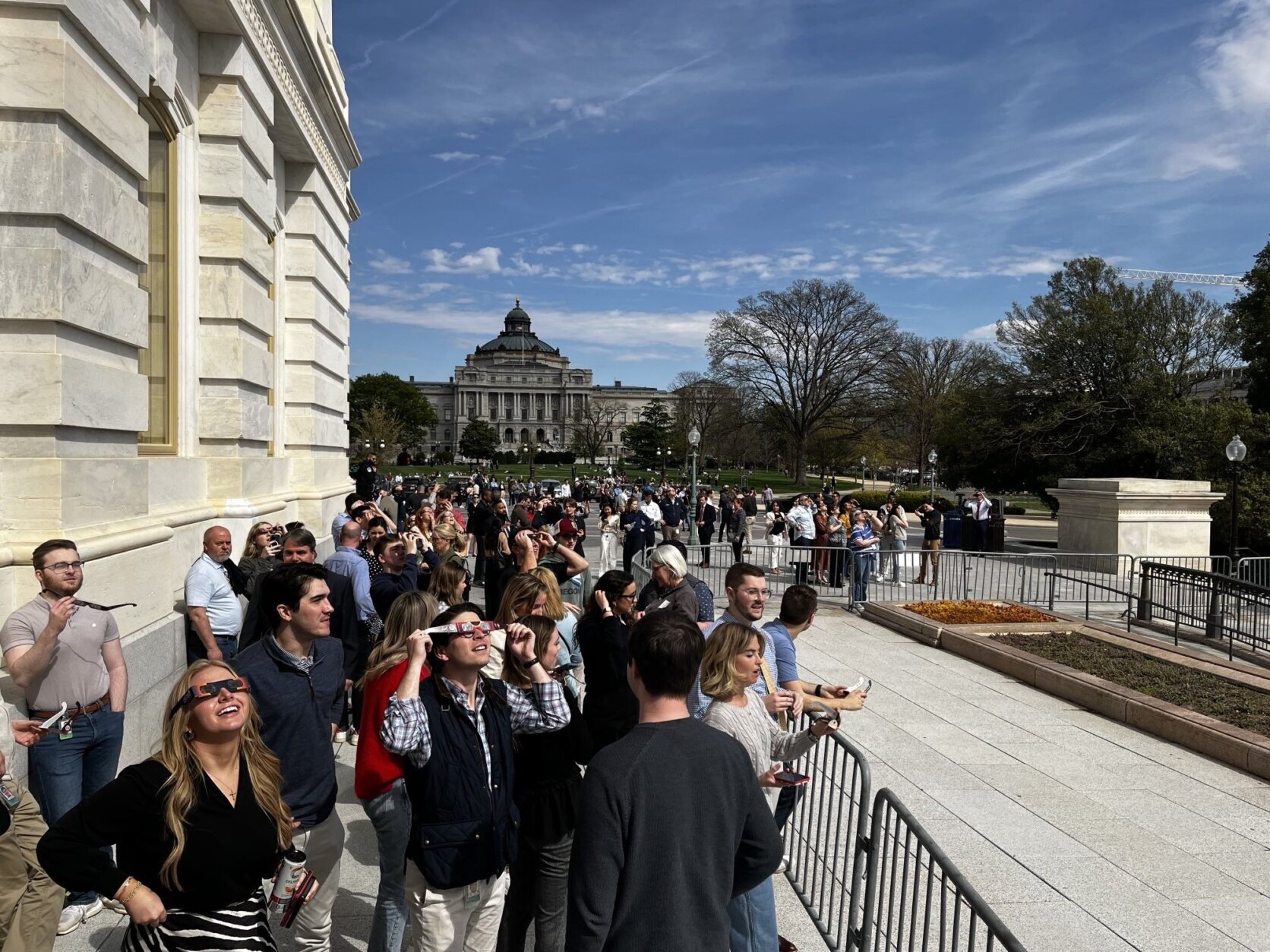
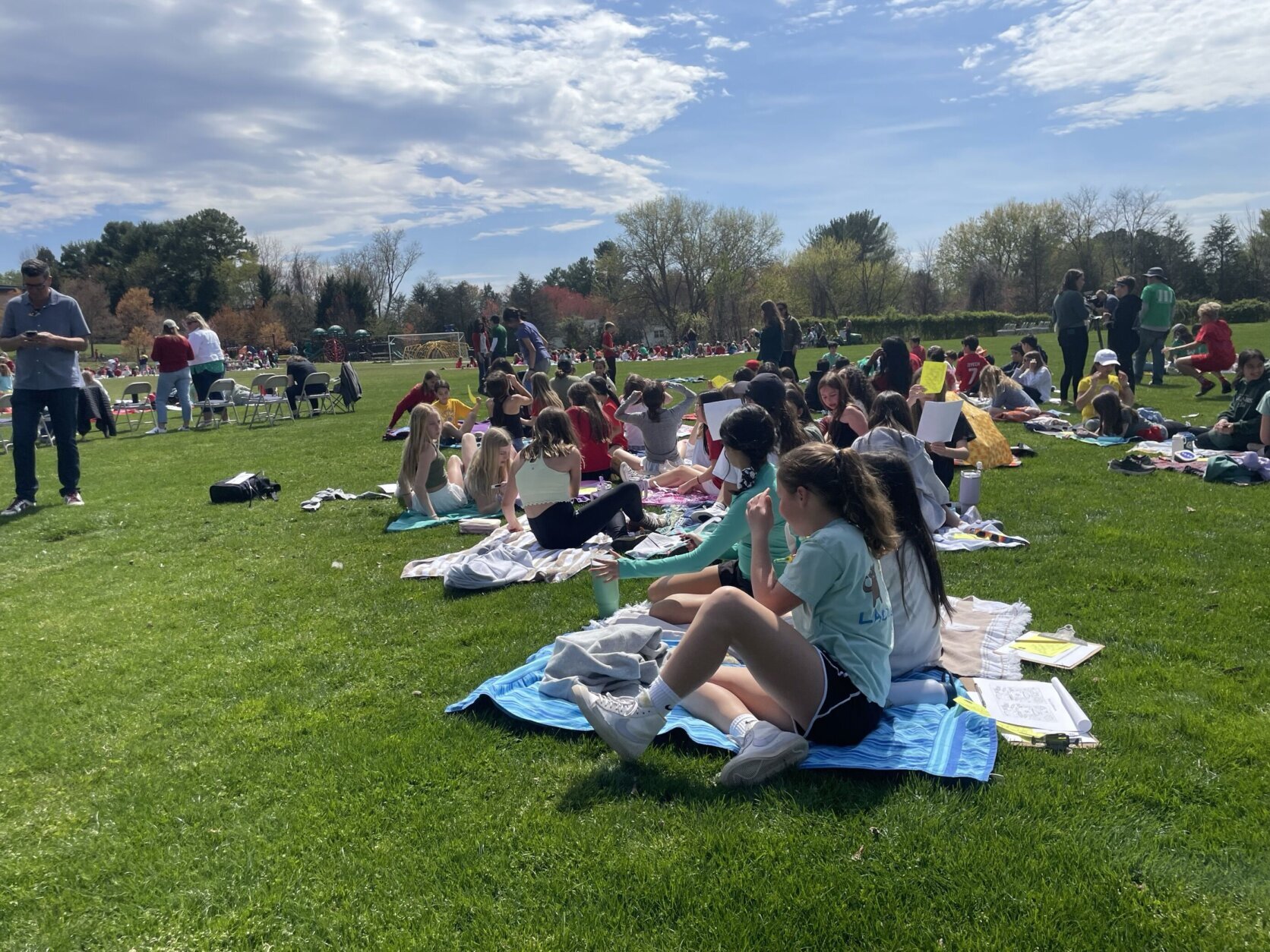
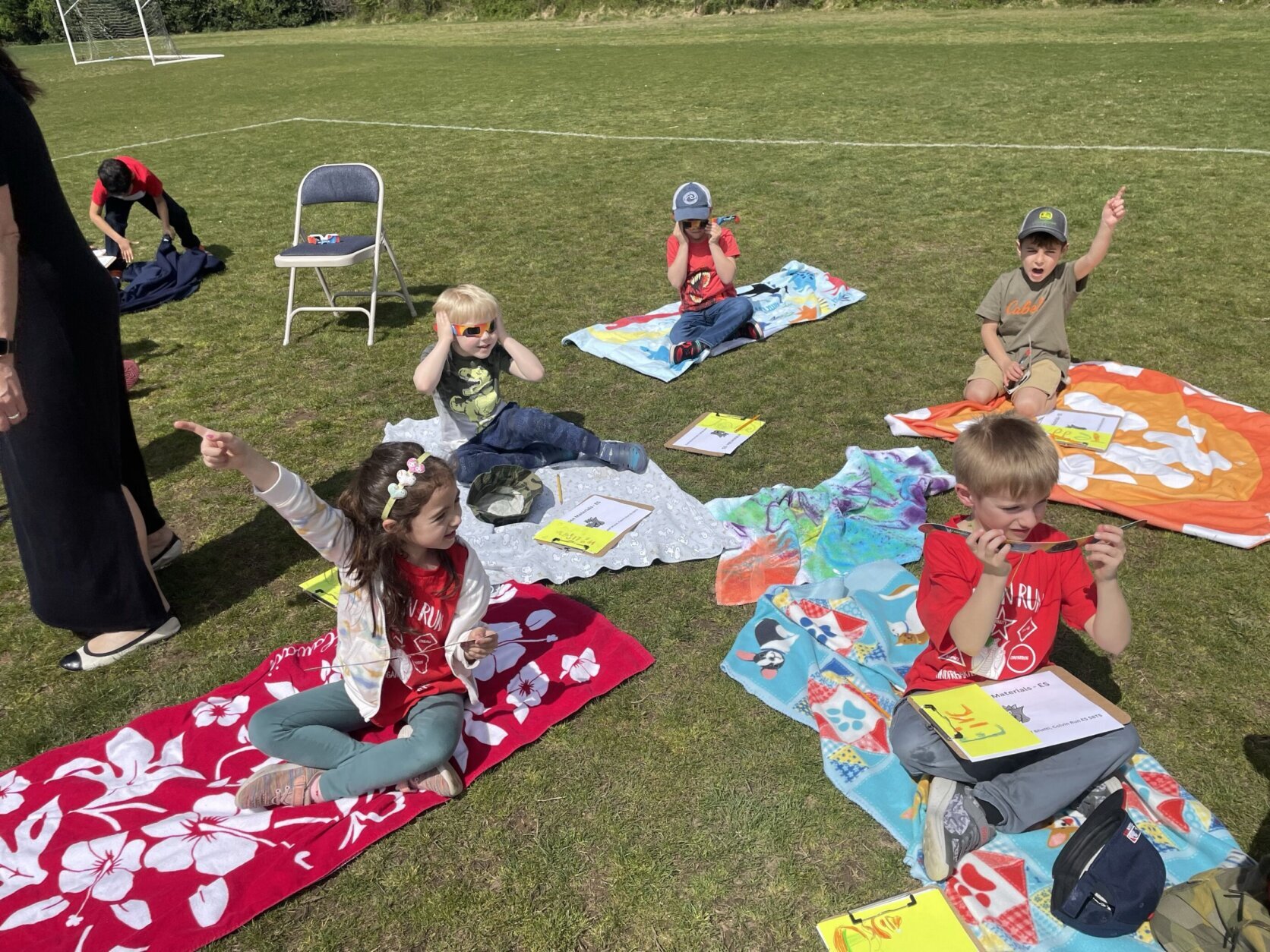
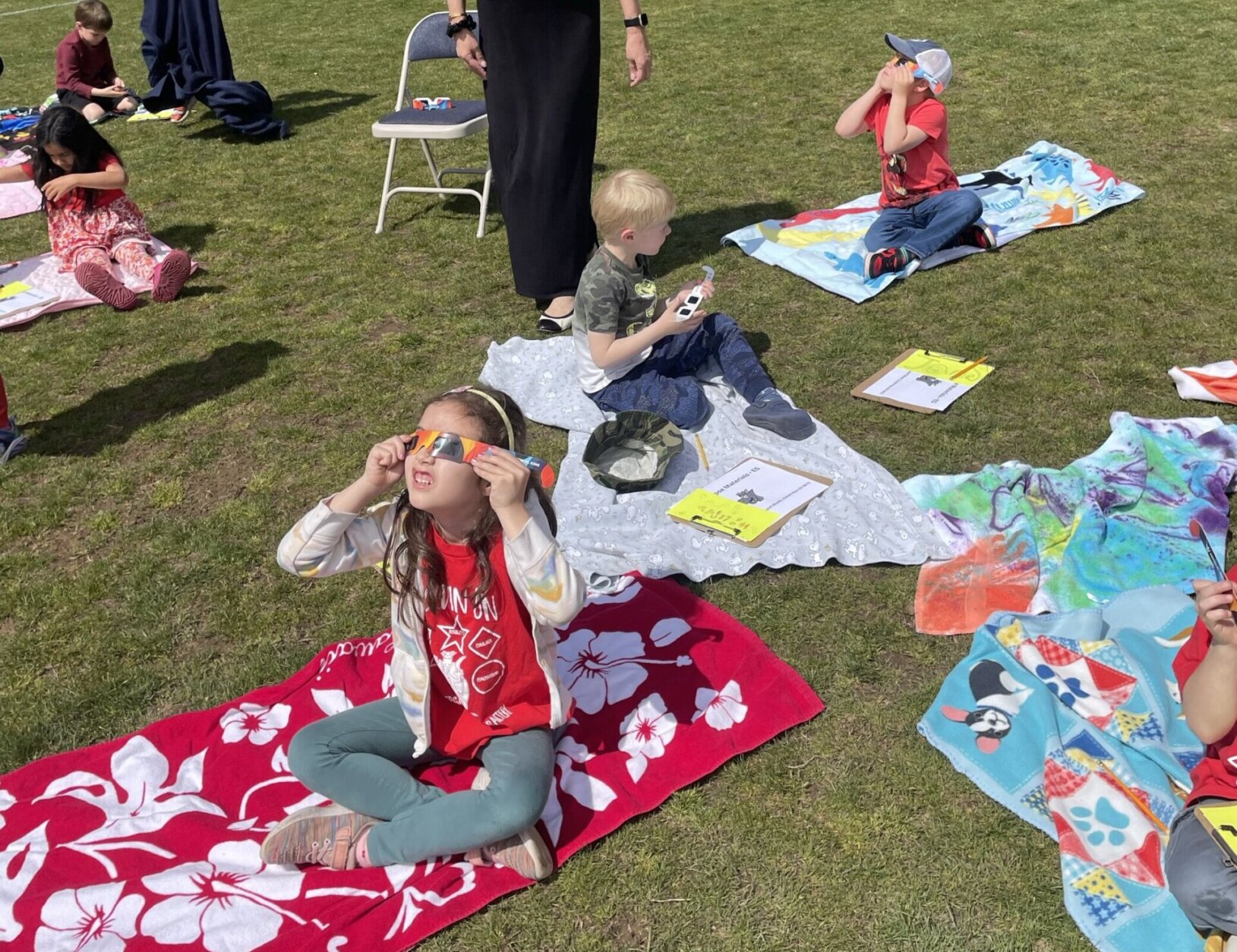
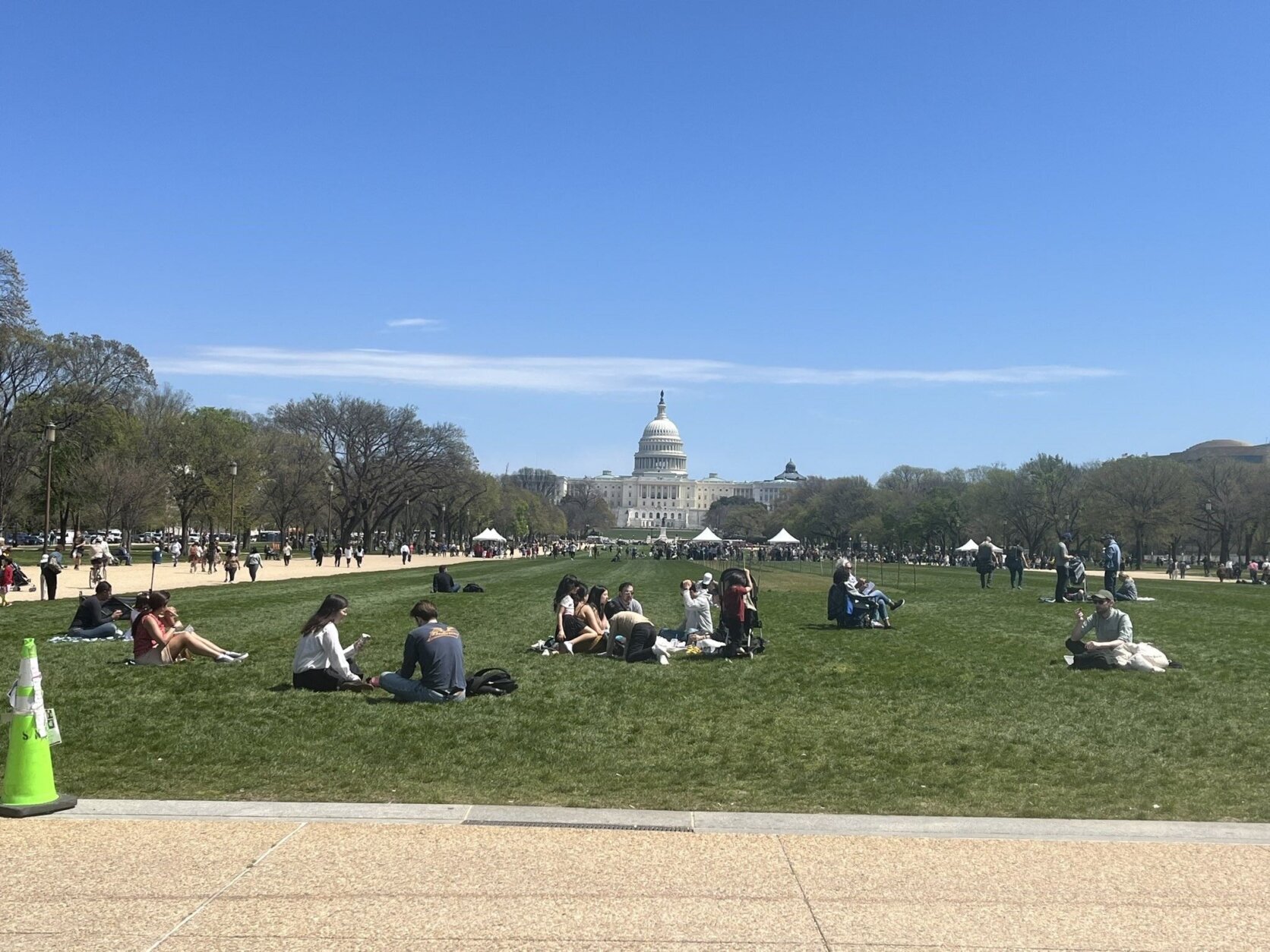
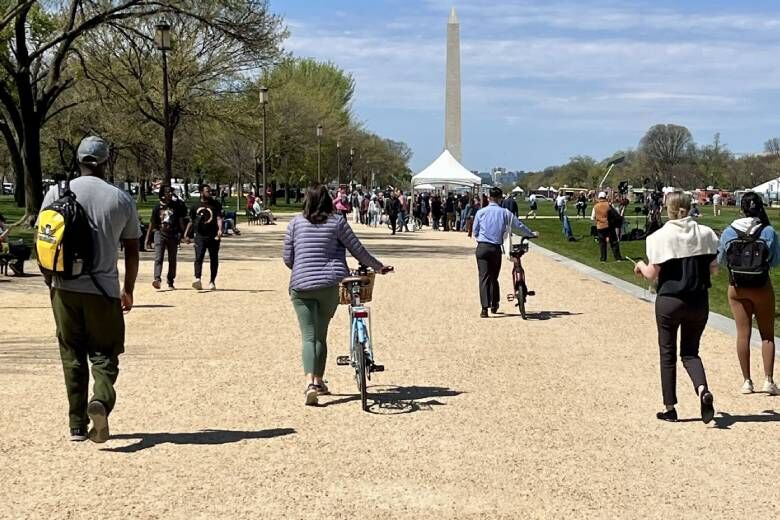
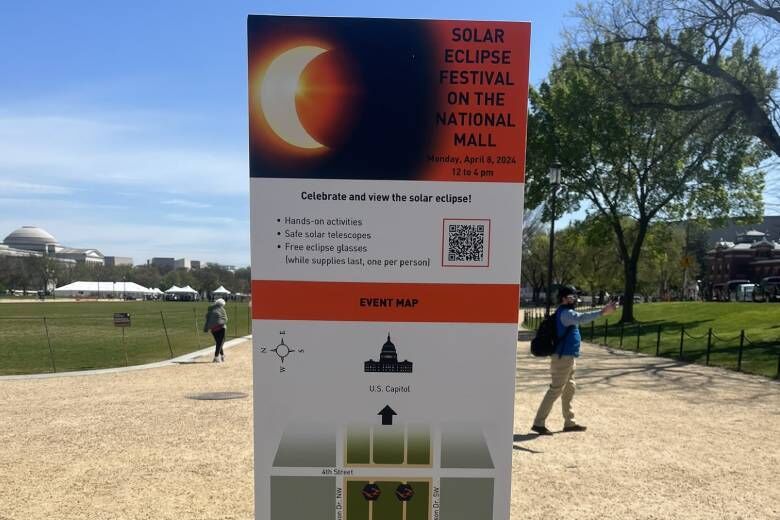
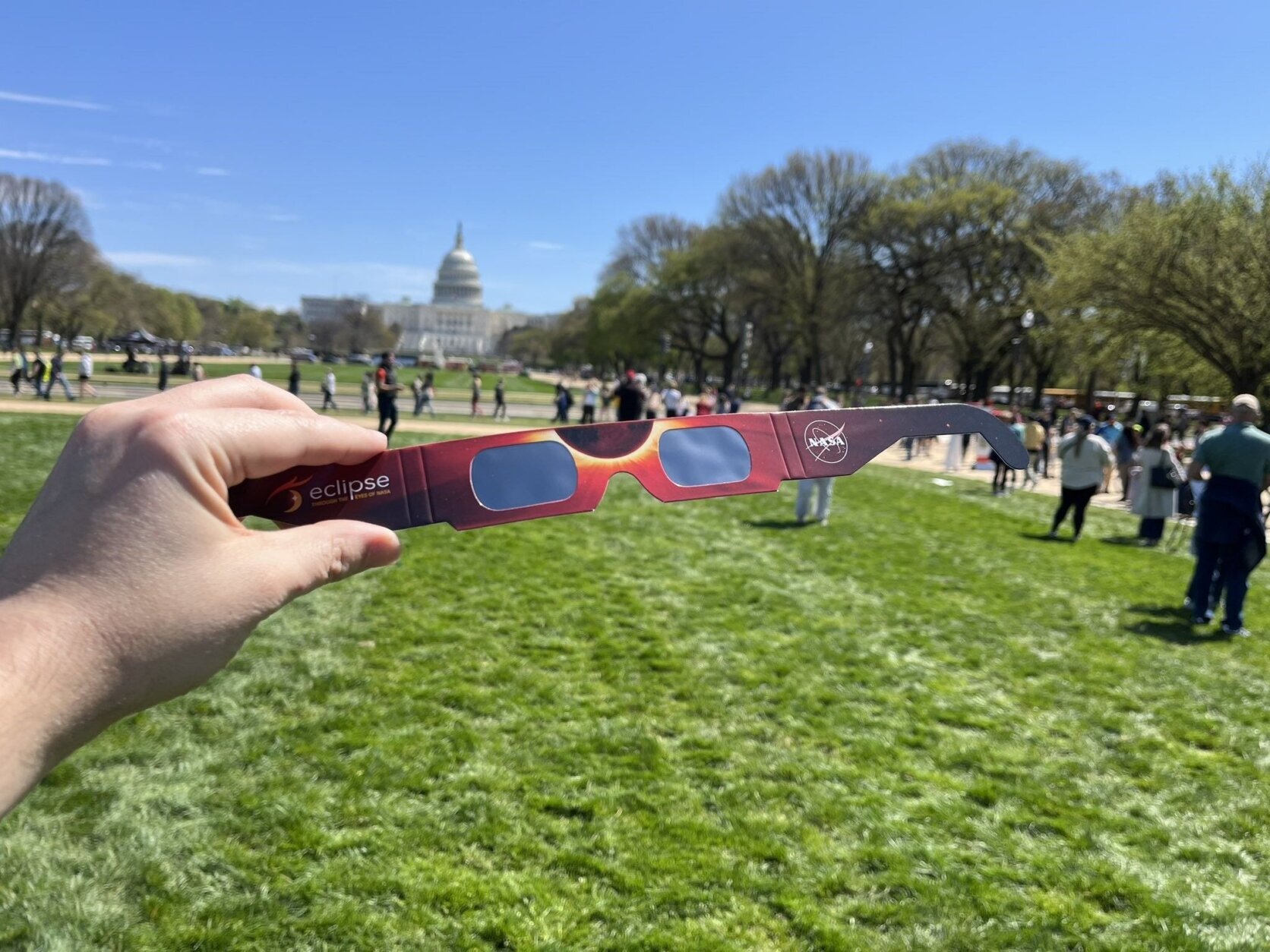
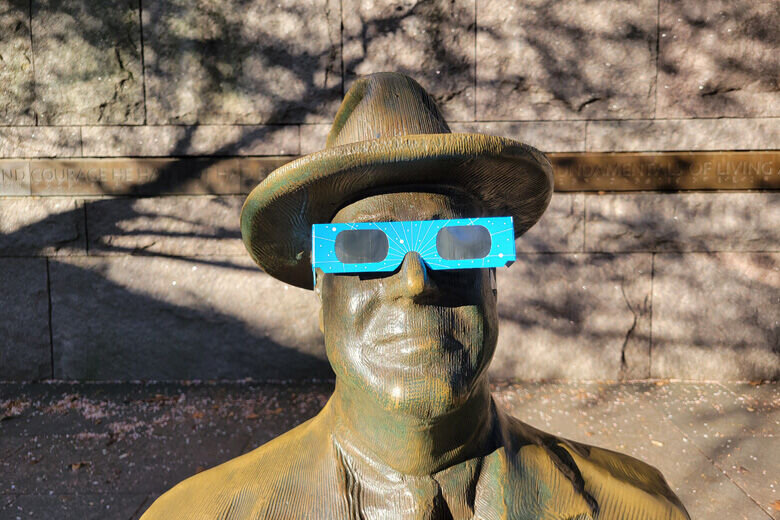
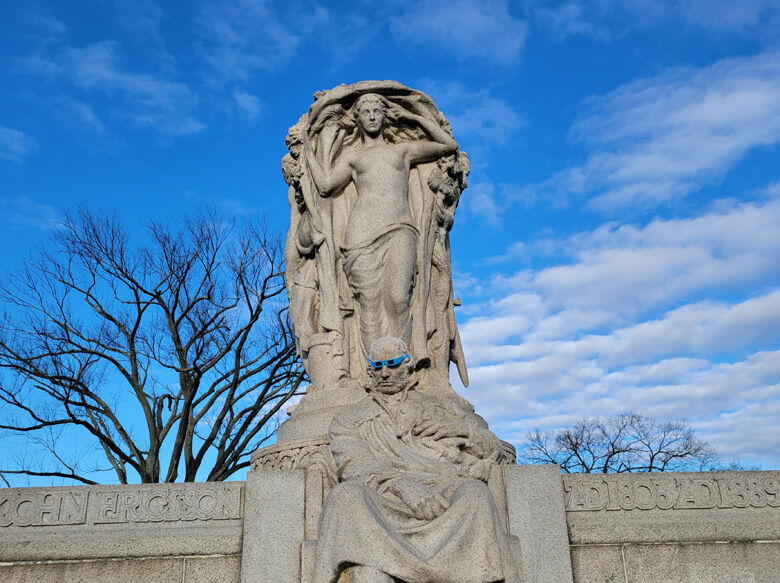
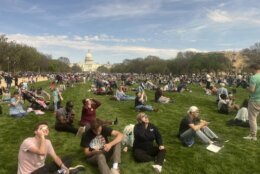
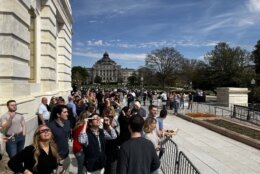
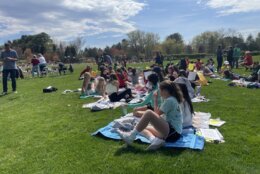

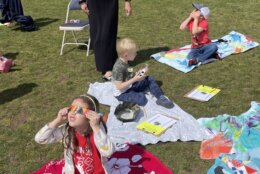
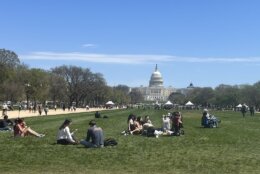
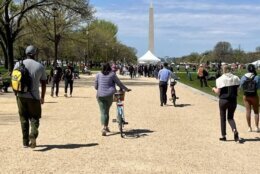
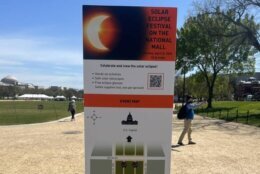
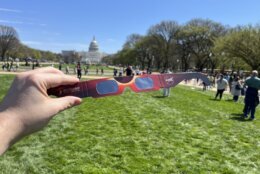
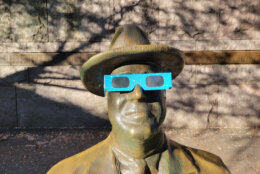
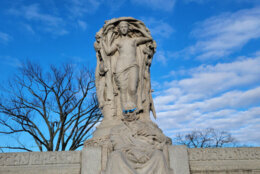
What you need to know about solar eclipses
A total eclipse happens when the moon lines up perfectly between Earth and the sun, blocking all sunlight. Monday’s solar event was almost twice as long, with an even wider audience, than the total solar eclipse that stretched across the U.S. in 2017.
It lasted around 4 minutes and 28 seconds at its peak for those in its path of total darkness, which stretched from Mexico’s Pacific coast, crossed into Texas and 14 other U.S. states, before it exited over Canada.
North America won’t experience another coast-to-coast total solar eclipse for 21 years — that one will stretch from Northern California to Cape Canaveral, Florida.
More on the solar eclipse:
- What to know about Monday’s total solar eclipse
- Not in the path of totality? You can still watch Monday’s total solar eclipse online
- Blind people can hear and feel the solar eclipse with new technology
- ‘Don’t damage those eyes’ observing Monday’s solar eclipse, medical expert says
- Where to find eclipse glasses and watch parties around the DC area
- Astronomers hopeful scientific breakthroughs could come from total solar eclipse
If you missed looking toward the sky, NASA streamed telescope views of the sun.
The Exploratorium museum, Time and Date and Slooh also streamed eclipse day views.
Eclipse viewing parties in the DC area
From educational events on the National Mall and at the University of Maryland to nature-centered viewings at parks across Virginia, there were a number of viewing parties across the D.C. area. Check out WTOP’s full list of events.
Solar eclipse deals and specials
Many businesses took advantage of the total solar eclipse to promote special deals and events. Fast food chains and snack brands sold limited edition versions of their products nationally. Airlines such as Southwest and Delta advertised eclipse-viewing flight paths.
WTOP’s Emily Venezky, Greg Redfern and The Associated Press contributed to this report. WTOP’s Nick Iannelli reported from the National Mall in D.C. and WTOP’s Kyle Cooper reported from Fairfax County, Virginia.
Get breaking news and daily headlines delivered to your email inbox by signing up here.
© 2024 WTOP. All Rights Reserved. This website is not intended for users located within the European Economic Area.



